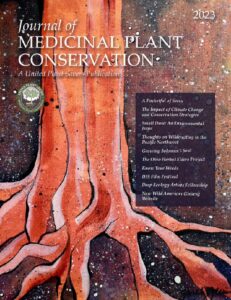The Threat of Climate Change, Drought, and Hydropower Dams on the Mekong River’s Traditional Medicinal Plants and HealersAdd New
by Dr. Michele Devlin

Mekong Delta wetlands
The Mekong is the world’s 12th largest river and the longest in Southeast Asia. Its headwaters begin in China, and it then meanders for 2,700 miles through Tibet, Myanmar, Thailand, Laos, Cambodia, and Vietnam. More than 75% of the river is concentrated in its lower region that traverses Thailand, Laos, Cambodia, and Vietnam before it empties into the South China Sea. The Mekong Delta has historically been viewed as the “rice bowl” of Southeast Asia. Its muddy, slow-moving waters have traditionally been rich in nutrients, and local residents are among the world’s leading producers of rice. The dry and rainy monsoon seasons along the Mekong provide one of the most biologically diverse environments on earth for fish, birds, mammals, and other creatures that thrive in the lush tropical environment and serve as important food sources for communities along the river.
For thousands of years, people along the Mekong have also relied on traditional medicinal plants for their wellbeing. Even today, shamans and other traditional healers remain common in many Delta communities and are often a primary source of medical care. Indeed, the heart of the Mekong runs through Southeast Asia, which sits at the crossroads of Traditional Chinese Medicine to the East and Ayurvedic Medicine to the west in India, along with local indigenous healing practices. Herbal healing, tinctures, infusions, cupping, coining, Qigong, and other sources of care are commonly practiced in the region, which is rich in numerous symbiotic spiritual practices taken from Hinduism, Buddhism, Christianity, Islam, and Animism.

Nature Sanctuary near Chau Doc
Today, however, the Mekong River Delta is under serious threat of environmental degradation, as are the traditional healers and medicinal plants that have called the area home for centuries. Global climate change has resulted in a greater frequency of unpredictable weather patterns, along with droughts and hotter temperatures. Dredging for Mekong river sand that is increasingly used for urban construction projects has often resulted in erosion of vulnerable river bank soils and plants, as has logging and mono-cropping. Upriver, geopolitical conflicts between the countries that rely on the Mekong have often strained multinational attempts for sustainable efforts to manage the Delta. In recent years, for instance, the volume of water in the lower Mekong Delta has significantly dropped due to the increase in dams being built upriver by China for hydropower. Illegal trading in precious animals and plants, as well as habit loss, also threaten the Mekong region.

As these trends continue, the Delta is seeing an increase in new human migration patterns and negative impacts on indigenous medicinal plants. For instance, unprecedented stress is being put on the environment due to rapid urbanization in Southeast Asia and growth in its population. At the same time, lower-income rice farmers in villages are increasingly out-migrating from Cambodia, for instance, to countries such as Vietnam or Thailand, looking for more reliable sources of income that are not subject to these forces. As these new threats are happening, the stunning biodiversity Cambodian woman on traditional small sampan, moving through the Mekong Delta wetlands Spring 2020 of the Mekong is being eliminated, including among its plants. The World Wildlife Fund (www.worldwildlife.org/places/greater-mekong) estimates that more than 20,000 species of unique plants live in the Delta Region. Almost half of Vietnam alone is covered in jungles and forests, with the IUCN Red List (https://www.iucnredlist.org/) citing almost 100 species of fl ora and fauna there are critically endangered. Without urgent, coordinated efforts to improve the sustainability of the region and reverse its degradation, indigenous medicinal Mekong Delta plants will continue to disappear, as will the local village shamans and herbal healers that rely on them.
Dr. Michele Devlin is from the University of Northern Iowa.






